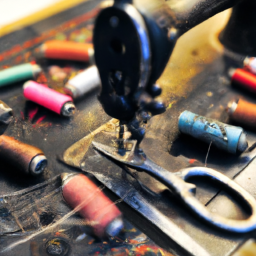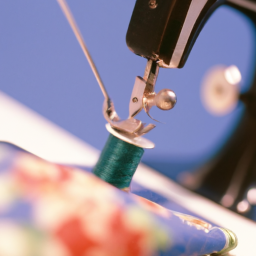
What is the History of Sewing
Sewing, the practice of using a needle and thread to join materials together, is an ancient craft that has been an integral part of human civilization for thousands of years. The history of sewing can be traced back to prehistoric times, where the earliest evidence of sewing comes from cave paintings depicting ancient humans wearing clothes stitched together.
Primitive sewing tools such as bone needles and natural fibers for thread were used by early humans to mend animal skins and create garments for protection against the elements. As societies developed, so did the techniques and materials used in sewing.

In ancient civilizations like Egypt, Greece, and Rome, sewing skills were highly valued, and garments were often decorated with intricate embroideries. Sewing was primarily done by hand, and the process was time-consuming and labor-intensive.
The Middle Ages marked a significant shift in sewing as it became a specialized craft, carried out mainly within monasteries and convents. Religious institutions played a vital role in preserving and advancing the art of sewing during this period. The use of various stitches and embellishments gained prominence, showcasing skilled needlework.
The Industrial Revolution of the 18th century brought about groundbreaking changes in the world of sewing. The invention of the sewing machine by Elias Howe in 1846 revolutionized the industry, making it faster and more efficient. This innovation paved the way for mass production of garments, enabling people from all walks of life to afford ready-made clothing.

In the 20th century, sewing became a common household skill, with many individuals creating their own clothing and home textiles. It was also during this time that the fashion industry boomed, marking the rise of haute couture and designer labels.
Today, sewing continues to be a popular craft, albeit less prevalent. The advent of fast fashion and globalization has led to a decline in the art of sewing, with many people opting for inexpensive, mass-produced clothing. However, a resurgence of interest in sustainable fashion and handmade crafts has brought sewing back into the spotlight.
With modern technologies, sewing machines have become more advanced, offering a wide range of features and functionalities. Additionally, online resources and tutorials have made learning to sew more accessible than ever.
As we look back on the rich history of sewing, it is important to appreciate the significance of this craft in shaping the way we dress and live. Sewing not only carries cultural and historical value, but it also allows for self-expression and creativity, enabling individuals to create unique and personalized garments.
Whether it’s through hand-sewing or utilizing the latest sewing machine, the art of sewing continues to weave its way through time, connecting generations and preserving the traditions of our ancestors.




